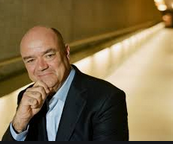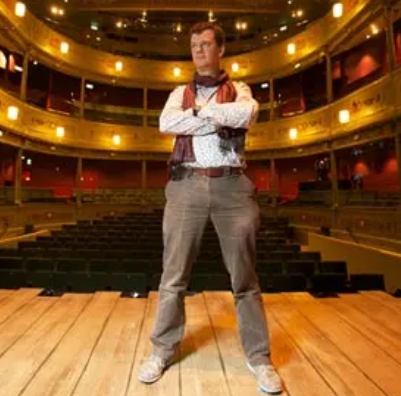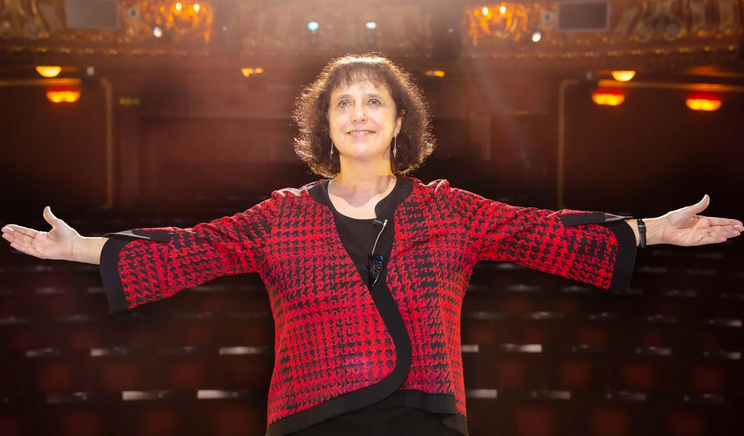On Monday Boris Johnson announced his (apparently irreversible) plans to take us out of lockdown forever. He even provided a detailed timetable of dates when each stage should be implemented.
That’s the kind of certainty and commitment that the theatre industry have been begging for.

Except that, looking underneath the bonnet of what he’s got lined up reveals an engine that still has lots of parts missing. As Eleanor Lloyd, theatre producer and current president of SOLT (pictured above), commented to the Evening Standard yesterday,
“The detailed document issued by government contains significant caveats for the target dates to be met and crucially those dates will only be confirmed one week in advance. Most West End shows need several months and significant financial investment to remount so I think it is likely that the re-opening of the West End will take place over the months following the green light being given.”
Julian Bird, chief executive of both the Society of London Theatre and UK Theatre, said in a statement,
But it does, at the very least, signal an intention to return to some kind of normality; this is being facilitated most of all by the fast roll-out of the vaccine, even if there are still unknowns around how fully effective it is — and whether or not it protects us against the mutations and variances that are now occurring.

As Sir Nicholas Kenyon, Managing director of London’s Barbican Centre (pictured above), put it in a piece for the Daily Telegraph yesterday,
“This roadmap is very welcome, but we now need to be able to move quickly and decisively to plan towards the stage three deadline of May 17 and the stage four deadline of June 21. These plans need to have the ability to be flexed in response to emerging data and the Prime Minister’s tests, but the week’s notice promised for these deadlines is just not sufficient. We need to do more than switch on the lights; venues cannot open overnight, and new safety procedures need to be put in place, rehearsals started, tickets sold with some confidence that they can be used.”
But more than just restoring the economic viability of the arts, it is also a moment of hope for the nation: as he also writes,
“As the Government juggles its priorities and pressures, there seems far too little realisation that museums, galleries, theatres, and concerts are not a problem in the re-opening scenario but a huge opportunity. Here are places where the public can meet securely, confidently, carefully interact and maintain distance. They will be a key element in drawing people safely back to cities and animating tourism and retail. In restoring a measure of normality, well-organised venues offering inspiring experiences are the best route back we have.”
Monday’s announcement does, at the very least, signal a fervent hope to return to some kind of normality; this is being facilitated most of all by the fast national roll-out of the vaccines, even if there are still unknowns around how fully effective it is yet — and whether or not it protects us against the mutations and variances that are now occurring.

At Bristol Old Vic, artistic director Tom Morris (again in the Daily Telegraph, pictured above) points out,
“This roadmap means we can start to plan again. There is still uncertainty of course. We can only programme something in May if it can survive without an audience. And like many theatres we will do what we can to engage our communities and our artists, live, online, open air, whatever we can. But the big shift will come with ‘stage 4’, ‘as close to normal as possible’. There can be nothing of significant scale until we get to that stage. And so far there is little detail about when realistically we can plan for full theatres. That’s the moment when the massive contribution our leisure and creative industries make to the wider economy can reignite, and so far it’s still a pipe dream.
This is just a framework for the first few stages as we emerge from the bunker. What the announcement doesn’t attempt to go near is any meaningful engagement with how we reinflate the economy. How for example are we actually going to rebuild the infrastructure of touring theatre? You can’t rebuild a touring circuit piecemeal, it has to happen all at once. If theatres can be full at Christmas then we will be doing really well but that is going to require a lot of planning, it won’t happen by itself. And that’s the next challenge. Now it’s time for government and business leaders in our industry, like so many others, to start planning our recovery in earnest.”
That planning needs a new resolve from government, says Dominic Cavendish, theatre critic of the Daily Telegraph,
“to keep things moving in the right direction. A sketched road-map is all very well, but the Government needs to accompany statements written in the sand with commitments written in ink. There’s a real danger of a grim scenario in which theatres arrive at being able to reopen but – thanks to uncertainty, the length of time shows take to put together, the depletion of the workforce, the degree of financial risk and the way the theatre world interconnects – the 2021 ‘offer’ on stages remains threadbare. It would be absurd if our towns started to look like their old selves but our theatres remained needlessly dark.”

My former editorial home of The Stage has been at the forefront of reporting industry reaction, and in a piece yesterday, Nica Burns, chief executive of Nimax Theatres (pictured above), committed to opening all six of its theatres with social distancing from the allowed date of May 17; but as they also reported,
“However, she was more cautious about the June 21 date, where theatres may potentially be able to reopen without social distancing. She said bigger shows, in both the West End and across the UK, will need more time to plan. ‘We have a no-earlier-than date for reopening without social distancing but it’s not guaranteed. Big shows need certainty and planning. All the producers will be looking at their options and we all have to wait, as that is much more complex’.”
And Fiona Allan, chief executive of Birmingham Hippodrome, told The Stage:
“The government’s roadmap comes as welcome news and like all of our sector, I can’t wait to get back to work in the theatre, not just on Zoom. It feels positive to know what is likely to be allowed, and in what order, so that we can all start to plan properly – even if the dates may shift. It will be vital that we continue to access the Job Retention Scheme and programmes to support freelancers up until we are, not just allowed to reopen, but operationally able to reopen.”
And again, there’s a strong economic argument to be made for facilitating this recovery, not just a social one: as the Barbican’s Sir Nicholas Kenyon also noted,
“The arts and culture have been decimated by this period of closure; all freelancers and many organisations are struggling for survival. The statistics are scary: 455,000 creative sector jobs were on furlough at the peak of the pandemic, with many thousands more artists and individual workers not covered by that scheme; the value of the arts and entertainment sector fell by 46 per cent and has still never recovered to its previous level. This is a creative sector that at the last count brought £18.3billion to the UK economy and has been, pre-pandemic, one of the fastest growing industries in the country.
So this is about the arts, but it is about the economy too. And it is about our ability to live humane and productive lives. Audiences have been starved of the stimulus they need to encounter great art, in order to begin to restore their wellbeing and mental health. Performers are desperate to perform; museums and galleries, theatres and concert halls wait ready to open; everyone wants this sector to make its indispensable contribution to national recovery.
Let’s hope that it can soon begin — with real and lasting momentum and none of the start-stop misery of the last attempt to bring theatre back.
